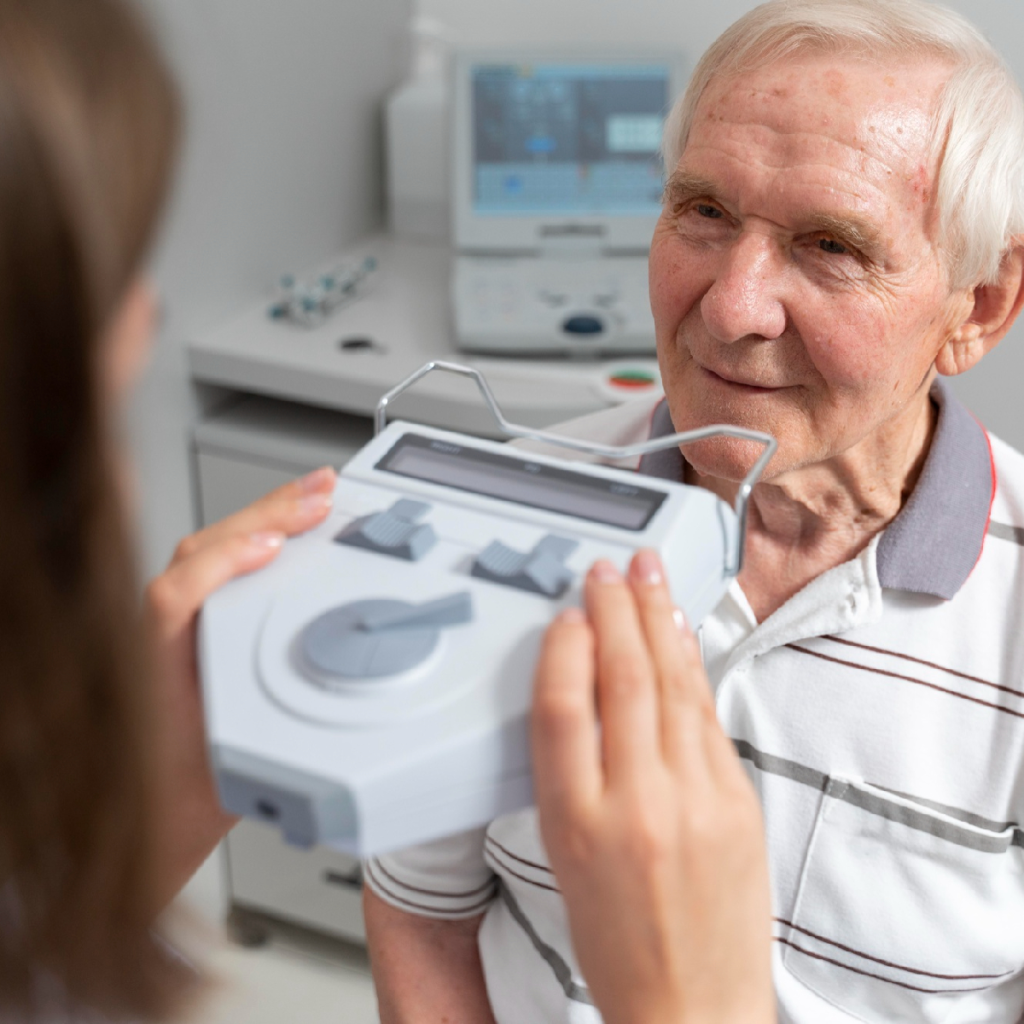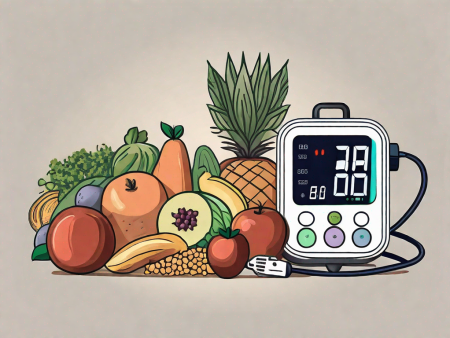Discover the specific symptoms of age-related macular degeneration (AMD) in this informative article.
Are There Specific Symptoms of Age-Related Macular Degeneration?
Age-related macular degeneration (AMD) is a common eye condition that affects millions of people worldwide. It is a progressive disease that primarily affects individuals over the age of 50, but can also occur in younger individuals. While the symptoms of AMD can vary from person to person, there are some common signs and indicators to be aware of.

Understanding Age-Related Macular Degeneration
Before we dive into the specific symptoms of AMD, let’s take a moment to understand what this condition is all about. Age-related macular degeneration is a degenerative disease that affects the macula, the central part of the retina. The macula is responsible for sharp, central vision, which is essential for tasks such as reading, driving, and recognizing faces. When the macula deteriorates, it can cause significant vision loss and impact daily activities.
Age-related macular degeneration is a chronic and progressive eye disease that damages the macula, the small but crucial part of the eye responsible for central vision. The exact cause of AMD is unknown, but factors such as genetics, smoking, and poor nutrition are believed to play a role. It is essential to note that AMD is not a reversible condition, but early detection and management can help slow down its progression.
When AMD affects the macula, it can lead to various visual disturbances and impairments. The severity of vision loss can vary from person to person, and in some cases, it can even result in legal blindness. The most common visual symptoms include a blurred or distorted central vision, difficulty seeing in low light conditions, and the appearance of dark spots or empty spaces in the visual field.
Aside from the visual symptoms, AMD can also have a significant impact on a person’s quality of life. The loss of central vision can make it challenging to perform everyday tasks, such as reading, writing, and recognizing faces. It can also affect a person’s ability to drive safely, navigate unfamiliar environments, and participate in social activities. The emotional and psychological impact of AMD should not be underestimated, as individuals may experience feelings of frustration, helplessness, and isolation.
Diagnosing AMD typically involves a comprehensive eye examination, which may include visual acuity tests, dilated eye exams, and imaging tests such as optical coherence tomography (OCT) or fluorescein angiography. These tests help determine the extent of macular damage and guide treatment decisions.
Treatment options for AMD depend on the type and stage of the disease. In some cases, lifestyle modifications such as quitting smoking, eating a healthy diet rich in antioxidants, and protecting the eyes from ultraviolet (UV) light may be recommended to slow down the progression of AMD. Additionally, certain nutritional supplements, such as vitamins C and E, zinc, copper, and antioxidants like lutein and zeaxanthin, may also be prescribed to support eye health.
For individuals with advanced AMD, treatment options may include intravitreal injections of anti-vascular endothelial growth factor (anti-VEGF) medications, which help reduce abnormal blood vessel growth and leakage in the macula. Photodynamic therapy, laser therapy, and implantable telescopic lenses are other treatment modalities that may be considered in specific cases.
While there is currently no cure for AMD, ongoing research and advancements in treatment options offer hope for improved outcomes. It is crucial for individuals at risk for AMD, such as those over the age of 50, to undergo regular eye examinations and adopt healthy lifestyle habits to minimize the impact of this condition.
Identifying the Symptoms of Age-Related Macular Degeneration
Recognizing the symptoms of Age-Related Macular Degeneration (AMD) is crucial for early diagnosis and intervention. AMD is a common eye condition that affects the macula, the part of the retina responsible for central vision. While the symptoms may differ between individuals, there are some common signs that may indicate the presence of this progressive eye disease.
Early detection of AMD is essential as it allows for timely treatment and management to slow down the progression of the disease. By understanding the symptoms, individuals can seek professional help and receive the necessary care to preserve their vision.
Early Signs and Symptoms
In the early stages of AMD, individuals may experience mild visual changes that are easy to overlook. These subtle signs can include slightly blurry or hazy vision, increased difficulty seeing in low light conditions, and the need for brighter light when reading or engaging in close-up tasks. These changes may be attributed to the gradual breakdown of the macula, leading to a decrease in visual acuity.
Moreover, some people may also notice a slight distortion or waviness in their central vision. Straight lines may appear bent or crooked, and objects may seem to have an irregular shape. These visual distortions can significantly impact daily activities such as reading, driving, or recognizing faces.
It is important to note that these early symptoms can vary in severity and may not cause significant disruption to daily life. However, it is crucial not to dismiss these visual changes and to consult an eye care professional for a comprehensive examination.
Progression of Symptoms
As AMD progresses, the symptoms may become more pronounced and noticeable. Individuals may experience increasingly blurred or distorted central vision, making it challenging to recognize faces, read small print, or perform tasks that require precise visual acuity. The loss of central vision can greatly impact one’s quality of life, hindering their ability to engage in activities they once enjoyed.
In addition to blurred or distorted vision, the presence of dark spots or blind spots in the visual field may also become more apparent. These blind spots, known as scotomas, can create gaps in the visual perception, making it difficult to see objects or details in specific areas. This can be particularly problematic when trying to navigate crowded spaces or when attempting to focus on specific points.
It is worth mentioning that AMD typically affects both eyes, although the progression of the disease may vary between eyes. Therefore, individuals may experience different degrees of visual impairment in each eye, further emphasizing the importance of regular eye examinations to monitor the condition.
Overall, understanding the early signs and progression of AMD is crucial for timely intervention and management. By recognizing the symptoms and seeking professional help, individuals can receive appropriate treatment options and lifestyle recommendations to help preserve their vision and maintain a good quality of life.
Differentiating Between Dry and Wet Macular Degeneration
Macular degeneration, also known as age-related macular degeneration (AMD), is a progressive eye disease that affects the macula, the central part of the retina responsible for sharp, detailed vision. There are two main types of AMD: dry and wet. Differentiating between these two types is essential as it can affect the treatment options and prognosis.
Symptoms of Dry Macular Degeneration
Dry AMD is the more common form of the disease, accounting for approximately 90% of cases. It is characterized by the gradual breakdown of light-sensitive cells in the macula. The macula is responsible for providing clear, central vision, which is crucial for activities such as reading, driving, and recognizing faces.
The symptoms of dry AMD often progress slowly, with individuals experiencing a gradual decline in central vision over time. This type does not typically cause sudden vision loss. People with dry AMD may notice blurred or distorted vision, the need for brighter light when reading or performing close-up tasks, difficulty recognizing faces, and the presence of drusen, which are yellow deposits under the retina.
While dry AMD generally progresses slowly, it can advance to the more severe form known as geographic atrophy. Geographic atrophy involves the loss of retinal pigment epithelial cells, leading to the formation of large, well-defined areas of atrophy in the macula. This can result in significant vision loss and impairment of daily activities.
Symptoms of Wet Macular Degeneration
Wet AMD, although less common, can be more severe and progress rapidly. It occurs when abnormal blood vessels grow under the retina and leak fluid or blood into the macula, leading to sudden and significant vision loss. Unlike dry AMD, wet AMD can cause rapid and noticeable changes in vision.
Symptoms of wet AMD may include a sudden decrease in central vision, the appearance of straight lines appearing wavy or distorted (a phenomenon known as metamorphopsia), and the presence of a dark spot in the central visual field. This dark spot, called a scotoma, can make it challenging to see objects directly in front of you.
Without prompt treatment, wet AMD can cause permanent damage to the macula and lead to severe vision loss. It is crucial to seek immediate medical attention if you experience any sudden changes in your vision.
Diagnosing the type of macular degeneration requires a comprehensive eye examination, including a visual acuity test, dilated eye exam, and imaging tests such as optical coherence tomography (OCT) or fluorescein angiography. These tests help ophthalmologists determine the presence and severity of AMD, allowing them to develop an appropriate treatment plan.
Treatment options for AMD vary depending on the type and stage of the disease. Dry AMD currently has no cure, but lifestyle modifications such as eating a healthy diet rich in antioxidants, quitting smoking, and protecting your eyes from harmful UV light can help slow its progression. Wet AMD, on the other hand, may be treated with medications called anti-vascular endothelial growth factor (anti-VEGF) drugs, which can help reduce abnormal blood vessel growth and preserve vision.
In conclusion, differentiating between dry and wet macular degeneration is crucial for understanding the symptoms, progression, and treatment options of this sight-threatening disease. Regular eye exams and early detection play a vital role in managing AMD and preserving vision for as long as possible.
Risk Factors and Prevention of Age-Related Macular Degeneration
While it is not always possible to prevent age-related macular degeneration, there are certain risk factors that can increase the chances of developing the condition. Understanding these factors and adopting healthy habits can help reduce the risk or delay the onset of AMD.
Who is at Risk?
Some of the primary risk factors for AMD include advanced age, smoking, a family history of the disease, and certain genetic factors. Individuals with a history of heart disease, high blood pressure, obesity, and prolonged sun exposure may also have an increased risk.
Lifestyle Changes for Prevention
While we can’t change our age or family history, we can make certain lifestyle modifications that may help reduce the risk of AMD. Some of these changes include quitting smoking, maintaining a healthy diet rich in antioxidants and omega-3 fatty acids, wearing UV-protective sunglasses, managing conditions like high blood pressure and diabetes, and engaging in regular exercise.
Diagnosis and Treatment of Age-Related Macular Degeneration
If you suspect you may have AMD based on the symptoms you are experiencing, it is crucial to seek professional evaluation and diagnosis from an eye care specialist. Early detection and appropriate treatment can help manage the condition effectively and preserve vision for as long as possible.

Diagnostic Procedures
Eye care professionals use various diagnostic tests and procedures to evaluate and diagnose age-related macular degeneration. These may include visual acuity tests, dilated eye exams, optical coherence tomography (OCT), fundus photography, and fluorescein angiography, among others. These tests help assess the severity of the disease and determine the type of AMD.
Current Treatment Options
While there is no cure for age-related macular degeneration, several treatment options are available to manage the condition and slow down its progression. These include medications, such as anti-VEGF injections for wet AMD, laser therapy, and the use of low vision aids and devices to enhance remaining vision. The choice of treatment depends on the type and stage of AMD, as well as the individual’s overall health.
In conclusion, age-related macular degeneration is a complex eye condition with varying symptoms and progression. It is crucial to be aware of the specific signs and indicators of AMD to ensure early detection and intervention. By understanding the risk factors and adopting healthy lifestyle habits, we can take proactive steps to reduce the risk. Remember, always consult with an eye care professional for accurate diagnosis and personalized treatment options. Take care of your eyes, and let’s keep the world in focus!







Can you be more specific about the content of your article? After reading it, I still have some doubts. Hope you can help me.
Hi! Do you know if they make any plugins to help with SEO?
I’m trying to get my blog to rank for some targeted keywords but I’m not seeing very good results.
If you know of any please share. Kudos! You can read similar text here: Blankets
Can you be more specific about the content of your article? After reading it, I still have some doubts. Hope you can help me.